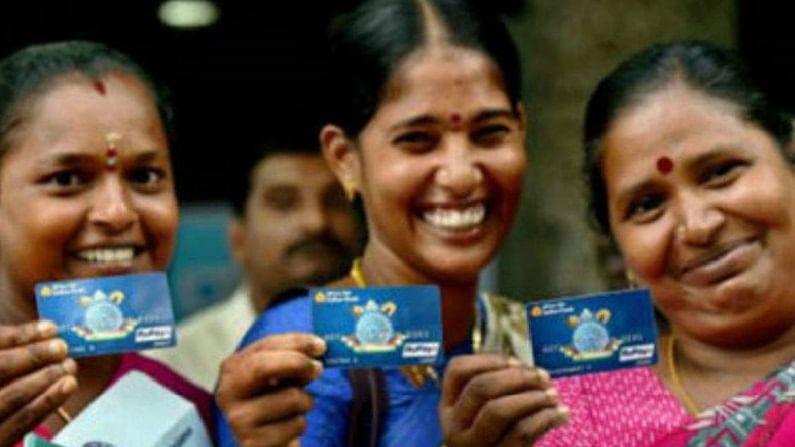Jan Dhan:11 lakh new beneficiaries in May; deposits swell by Rs 2,432 crore
Jan Dhan accounts: However, there has been a decline in the number of beneficiaries who have been issued debit cards

There has been a rise in the number of Jan Dhan beneficiaries in the Covid-ravaged month of May and the cumulative deposits jumped by Rs 2,432 crore, government data show.
In April, there was an outflow of Rs 2,253 crore in April.
The number of Jan Dhan beneficiaries that stood 4,231 lakh at the end of April jumped to 4,242 lakh at the end of May, recording an addition of 11 lakh. In other words, on an average nearly 35,500 individuals were enrolled every day during May.
In April, too, about 11 lakh individuals joined the flagship financial inclusion programme of the Centre.
Of the total beneficiaries, women constituted 2,350 lakh, or 55.39%, of the entire account holders.
Public sector banks
Of the 42.42 crore beneficiaries as many as 33.56 crore, or 79.11%, have opened accounts with public sector banks. The rest are split between regional rural banks (7.60 crore or 17.91%) and private sector banks (1.25 crore or 2.94%).
With reduced banking hours during the second surge of the infection, the substantial rise in the new enrolments is perhaps attributable to the business correspondents who have been deployed in large numbers by the banks in the rural areas.
Average deposit
As a consequence of the total deposits going up, the average deposit in Jan-Dhan accounts rose from Rs 3,386 at the end of April to Rs 3,435 at the end of May. However, the average deposit was still lower than Rs 3,449 figure at the end of March 2021.
Analysing the Jan Dhan data till March 31, 2021, it was found that the union territory of Lakshadweep topped the country on average deposits.
The average deposit per beneficiary in this scenic island stood at Rs 18,684, which was 5.4 times of the all-India average of Rs 3,449.
At the end of FY21 Manipur was the state with the lowest deposit per beneficiary at Rs 2,037.
Debit cards
However, there has been a decline in the number of beneficiaries who have been issued debit cards.
The number of debit cards issued stood at 31 crore at the end of May. In other words, 73.07% of the beneficiaries have got debit cards at the end of last month.
This is a drop from 73.17% coverage at the end of April. At the end of March, on an average, 73.22% of the beneficiaries had debit cards that allow them to operate ATMs and even do online purchases.
Among the states and union territories, there is a wide disparity in the share of the Jan-Dhan beneficiaries who have debit cards.
At the end of FY21 about 90% of the beneficiaries of Jan-Dhan accounts in Ladakh had debit cards while only 35.14% had it in Manipur. At the bottom of the states was Mizoram where only 35.14% accounts holders were given a debit card.
Rural-Urban
Of the 42.42 crore Jan-Dhan beneficiaries, as many as 27.97 crore are from rural and semi-urban regions. In other words, 65.93% are from the rural and semi-urban areas.
The beneficiaries in the urban/metro centres stood at 14.44 crore or 34.04% of the total in May.
Since August 2014
Launched in August 2014 for those at the bottom of the financial pyramid, the Pradhan Mantri Jan Dhan accounts was a quantum leap in the direction of financial inclusion. From an account for every family, the new target is opening a bank account for each adult.
These accounts can be opened in public sector banks, regional rural banks, and private sector banks.
One of the most important immediate collateral benefits was the establishment of a system where direct cash transfers reached the intended targets without any leakage.